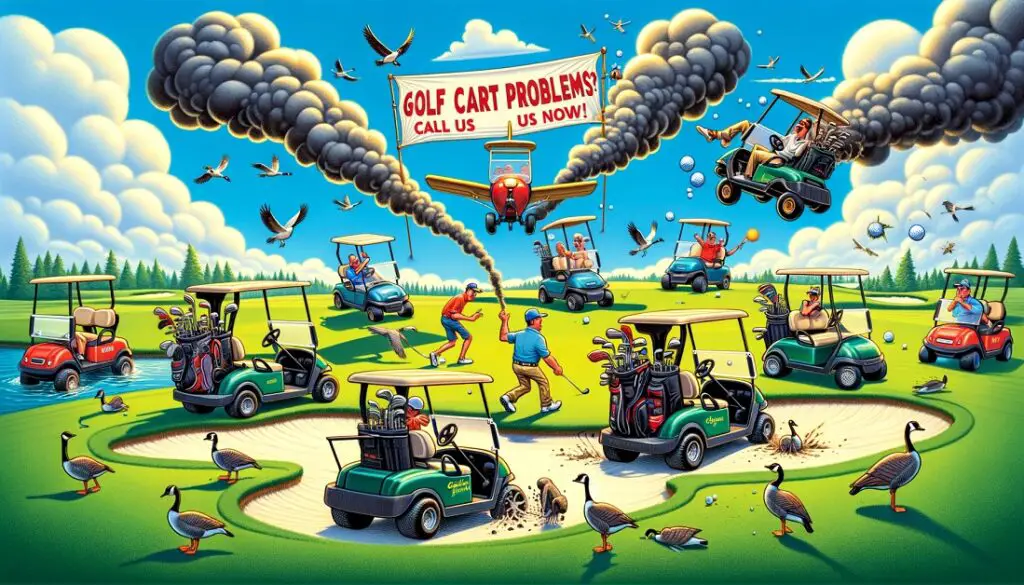Imagine this: you’ve just played the perfect shot, your golf ball arcs beautifully against the blue sky, and you’re about to follow it down the fairway. However, as you turn to your trusty golf cart, ready to revel in the glory of your swing and continue to your next victory, it meets you silently. There was no cheery hum or soft whirring—nothing. This is when you encounter the unspoken disruptor of golf games everywhere: golf cart issues. Whether it’s a stubborn engine, a battery that won’t keep a charge, or tires that seem to have a particular grudge against moving the evolution golf cart problems that can beset these seemingly simple vehicles are numerous and frustrating. As we delve into the world of golf cart troubleshooting, keep in mind that each problem not only tests your patience but also provides an opportunity to learn the skill of maintaining these crucial caddies of the green.
Table of Contents
ToggleHow Do I Find Out Where There Is A Problem In My Golf Cart?
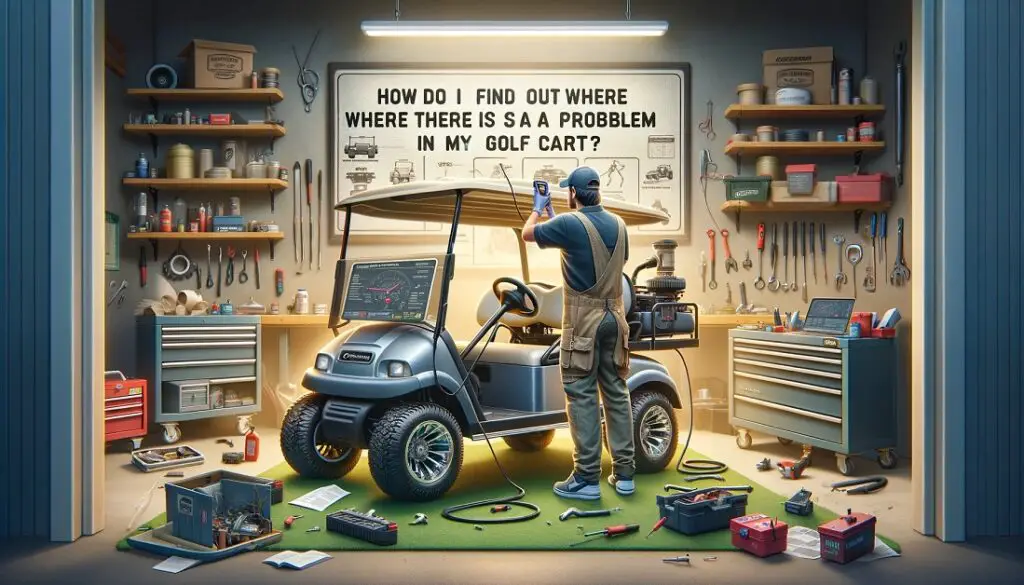
Navigating the minefield of potential golf cart difficulties can feel like a detective game, with subtle signs and an elusive culprit. The first step in resolving any problem is to determine its source, and this is also true for golf cart troubleshooting. Start with a systematic check and tell you how to solve the issues:
Listen and Observe: Your golf cart may indicate its distress with sounds or behaviors. Do you hear a clicking sound when you try to start it? Is it starting but then struggling to move? These first observations can help you pinpoint the source of the problem.
Check the Battery: Battery troubles are the root cause of many golf car problems. Ensure the battery terminals are clean, tight, and corrosion-free. A multimeter can be your best friend in this situation, allowing you to evaluate whether the battery has the proper charge
Inspect the Tires and Wheels: Flat or underinflated tires can have a significant impact on your golf cart’s performance. In addition, ensure that the wheels are properly mounted and that the tires are not severely worn or damaged.
Inspect the Electrical Connections: Loose or corroded wires can cause a variety of concerns. With the power turned off, inspect all electrical connections for anything that appears out of place or broken.
Fuel System (For Gas-Powered Carts): If your cart uses gasoline, inspect the fuel level, fuel lines, and filter. Clogs or leaks in this system may prevent your cart from starting or cause it to perform poorly.
Most Common Golf Cart Problems and How To Fix It

Golf carts, despite their simplicity and dependability, are not without challenges. Recognizing the most common problems these cars encounter will help you plan for rapid and effective troubleshooting. From battery issues to motor faults, understanding what may go wrong is the first step toward keeping your cart in peak condition.
Battery Problem
Troubleshooting golf cart problems stem from the battery. Given its critical role in powering electric carts, any issue here could render your vehicle immobile. Typical symptoms include the golf cart not starting, losing power rapidly, or functioning at a low pace. Battery aging, insufficient maintenance, or defective connections are frequently the core causes of these problems.
How Do I Fix It?
Addressing battery difficulties requires a few simple steps:
- Look for visible evidence of damage or leaks. Keep the terminals clean, as corrosion might restrict electrical flow.
- Use a multimeter to measure the voltage. A completely charged golf cart battery should be around 12.6 volts. If the voltage drops drastically, the battery may need to be recharged or replaced.
- For batteries that require water, ensure that the levels are sufficient. Fill any low cells with pure water, taking care not to overfill.
- Loose connections can also be problematic. Tighten the battery terminals and cable connectors to ensure proper contact.
- Charge the battery properly using the golf cart’s charger. If the battery cannot keep a charge or is more than five years old, it may be time to replace it.
Ignition Problem
You spend a couple of minutes on your cart but your golf cart won’t start so maybe an ignition issue because this is a very important component for starting your golf cart and for some reason it not working well-broken ignition switches, dead batteries, the faulty connection they are all possible reasons of your cart not start and one more common symptom is the golf cart’s complete silence or inability to start the engine when the key is turned this is all possible issue I discuss with you when your cart not start
How Do I Fix It?
- First, make sure the problem isn’t just a dead battery. Check sure the battery is completely charged and capable of holding a charge, as a weak battery may not deliver adequate power to the ignition system.
- Over time, the ignition switch may become worn or broken. Use a multimeter to check for continuity when the key is turned to the “on” position. If there is no continuity, the switch might need to be changed.
- The solenoid is an important component of the starting process, acting as a conduit for the electric current to the starter. When you turn the key, listen for a clicking sound; if there is no sound, it could be a solenoid issue. Testing with a multimeter can check that it is working properly.
- If the battery, ignition switch, and solenoid are in good shape, the problem could be with the starter. A starter that fails to engage or creates grinding noises may require repair or replacement.
- Finally, check all wire connections to and from the ignition system. Loose, corroded, or damaged wires might prohibit the ignition system from working properly.
Motor Problem
Right now the issue I discussed seems normal but it very common issue your cart is working smoothly but suddenly it stops you do not understand whatis happeningbecause happening because the battery is fully charged, the wires connection is tight and you also check the ignition system which is already fine now you are confused what is the problem. I tell u this is a motor problem because this is your cart powerhouse that converts electrical energy into mechanical energy and when something goes wrong with it, it can feel like your cart’s heart has stopped. So next time the golf cart strains to start, loses power under load or does not move at all even if everything is fine it means your motor problem first check and figure out the issue then resolve it
How Do I Fix It?
Motor difficulties might be scary, but there are a few measures you can take to identify and potentially resolve the issue:
- Begin with a visual inspection for any evidence of physical damage or burning. Overheating may cause apparent damage to the motor’s components.
- The brushes on many golf cart motors can wear out over time. If your cart has been in use for some years, inspect the brushes for wear and replace them as needed. Also, make sure that all connections to the motor are secure and corrosion-free.
- The solenoid, which functions as a switch, is a crucial component in starting the motor. A clicking sound when attempting to start your cart indicates that the solenoid is engaged; however, if the motor does not start, the solenoid may be malfunctioning or the connection between the solenoid and the motor may be damaged.
- If you’re comfortable with more complex diagnostics, using a multimeter to check the motor’s input and output will assist in identifying whether the problem is with the motor itself. This normally entails measuring the voltage at the motor terminals to ensure that it is receiving power.
- If the previous methods do not resolve the problem, or if you need clarification on how to proceed, it is best to seek expert assistance. Motor difficulties can sometimes be complex, necessitating expert knowledge and tools for a permanent solution.
Solenoid Problem
One of the most important factors is the solenoid it is important in your golf cart’s complicated electrical system, a form of electrically triggered switch that regulates the flow of current from the battery to the motor. When the solenoid fails, it can create the most frustrating problems: your golf cart may refuse to start or come to a halt in the middle of the trip. The telltale indicator of a solenoid problem is sometimes a noticeable clicking noise when the accelerator is applied, yet the vehicle remains motionless. Because the symptoms overlap, this condition is frequently misdiagnosed as a battery or motor issue.
How Do I Fix It?
Addressing a solenoid problem effectively necessitates a combination of observation and action:
- First, visually inspect the solenoid for any obvious evidence of damage or wear. Look for discolored areas that could indicate overheating or physical damage to the solenoid.
- Make sure all electrical connections to the solenoid are secure and clean. A loose or rusted connection is often the source of the problem, hindering the solenoid’s performance.
- Using a multimeter, check the solenoid for continuity. Place one probe on each of the solenoid’s big terminals. Without pedal pressure, the multimeter should display no continuity. When the accelerator is engaged, the multimeter should show continuity. If the results diverge, the solenoid could be defective.
- If testing reveals that the solenoid is defective, replacement is the next step. This procedure often entails disconnecting the battery, removing the old solenoid, and installing a new one, being certain to reconnect all wires and terminals as they were before. To ensure compatibility and best performance, select a new solenoid that meets the requirements of your golf cart.
- If you’re not comfortable doing these tests or replacing the part yourself, or if you’ve completed these steps and the problem persists, it may be time to talk with a specialist. A trained technician can provide a thorough diagnosis and effectively resolve any concerns.
Speed Control Issue
Golf carts are built for leisurely movement across greens and walkways, and speed control is critical to their safe and effective functioning. However, when a golf cart begins to exhibit speed control concerns, such as unexpected surging, a lack of acceleration, or an inability to attain normal speeds, it indicates a problem with the cart’s speed control system. This system, depending on the model of your golf cart, may feature a potentiometer (pot), a speed controller, or other electronic speed control systems. Identifying and resolving problems in this complicated system is critical to the smooth operation of your golf cart.
How Do I Fix It?
- If your cart has a potentiometer, examine it first. The “pot” informs the speed controller how quickly you wish to go. Wear, corrosion, or damage can all have an impact on its functionality. Testing with a multimeter for continuity and resistance variations when you press the accelerator will reveal whether the potentiometer is working properly.
- The speed controller regulates the power from the battery to the motor based on the accelerator’s input. Visually inspect it for evidence of damage or burning, which may signal overheating or failure. A diagnostic test, usually performed using specific controller testing equipment or following the manufacturer’s instructions, can detect whether the controller is malfunctioning.
- Improper wiring or loose connections between the accelerator, potentiometer, and speed controller might result in inconsistent speed control. Ensure that all connections are tight and wires are in good condition, and replace any that are worn or damaged.
- Some speed control issues can be fixed with minor modifications or recalibrations to the speed controller settings. Refer to the manufacturer’s instructions for information on how to make these adjustments safely and accurately.
- If your cart has a problem expert detection is a better option because of the complexity of the overall system and the chance or possibility of finding any electronic problem you do not have the proper equipment to detect and resolve it so better option to find out expert assistance if the previous ways to solve this problem do not address. A professional may conduct a thorough assessment and repair any defects with precision and experience.
Direction Switch Problem
A golf cart direction switch problem can be particularly confounding, resulting in an inability to switch forward and reverse, as well as unexpected hesitations or failures when attempting to change direction. This switch, which is essential to the operation of your golf cart, guarantees that power from the battery reaches the engine in the correct direction to move the cart forward or backward. Mechanical wear, electrical problems, or simply dirt and debris interfering with the connections are all possible causes of direction switch malfunction.
How Do I Fix It?
To address and fix issues with the direction changeover, follow the instructions below:
- Begin by thoroughly inspecting the direction switch. Check for visible signs of wear, damage, or corrosion. Physical damage to the switch may necessitate a complete replacement.
- Over time, the contacts in the switch may become dusty or rusted, reducing electrical conductivity. Cleaning the switch contacts with an appropriate electronic cleaner can help restore correct function. To avoid electrical shock, turn off the golf cart and remove the keys before attempting this.
- Faulty or loose wiring connections to and from the direction switch can result in operational problems. Check that all connections are secure and in excellent working order, tighten any loose connections, and replace any damaged wires.
- Once the switch is clean and the connections are secure, check the switch’s operation. This could entail using a multimeter to check for continuity when the switch is in both forward and reverse modes. A lack of continuity in either position suggests a malfunctioning switch.
- Most of the time I know the thing is damaged but do not replace it we think spend some more time with this damaged part. I inform you this non-responsible behavior is a reason for major issues so a better option is when it needs replacement simply buy the correct type of part for your golf cart model and then replace it. Once you are done with all connections properly so check it because replacement is normally simple and easy
- If the problem persists after following these instructions, or if you are not comfortable conducting these repairs yourself, you should seek the help of a professional. A certified technician can identify and repair any underlying problems that may not be immediately obvious.
How Much Does It Typically Cost To Fix A Golf Cart Problem?
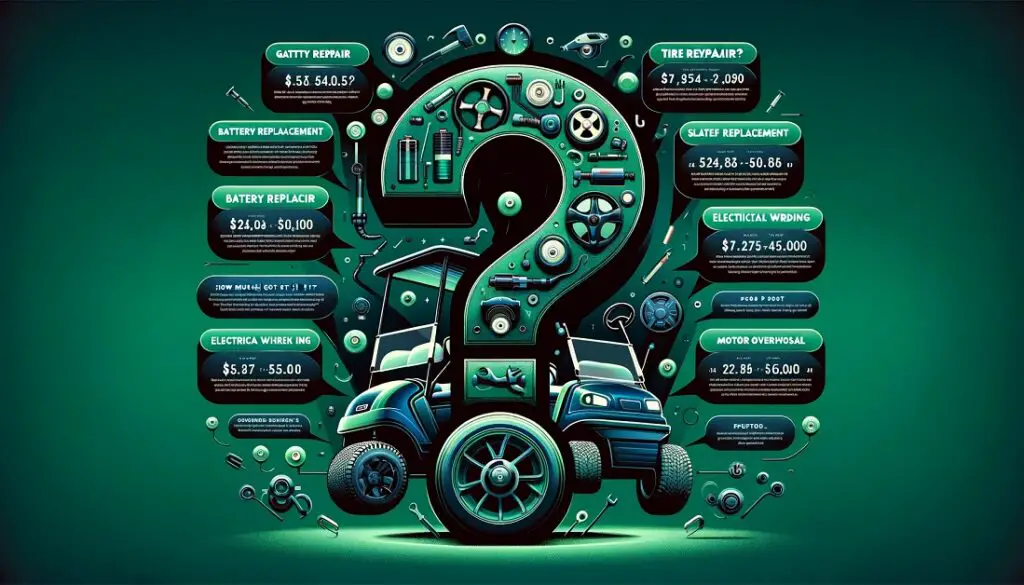
Firstly, I tell you one thing clearly the cost of anything that is not fixed depends on various factors like how big your problem is, labor, parts of your carts, etc so it means your cost totally depends on the nature of the problem. I tell you the estimated value which is very helpful for you when you fix your cart problem here is it:
Battery Replacement: In electric golf carts, the battery pack can be the most expensive component to replace. A new set of batteries might cost anywhere from $800 and $1500, depending on the quality and capacity required.
Motor Problems: Repairing or replacing a golf cart motor might cost between $500 and $2,000. The wide range explains the distinction between basic maintenance and acquiring a brand-new motor.
Solenoid Replacement: Solenoids are very affordable parts, with replacements ranging from $30 to $100. However, including labor, the overall cost could range from $100 to $200.
Speed Controller Issues: Replacing a speed controller can be one of the most expensive repairs, costing anywhere from $400 to $700, including parts and labor.
Direction Switch Issues: Problems with the direction switch might cost between $100 and $300 for components and labor, depending on the intricacy of the switch and installation costs.
General Maintenance and Minor Repairs: For less serious issues, such as changing worn tires, repairing loose connections, or doing periodic maintenance, expenses can be as low as $50 to a few hundred dollars.
One thing you should be understood that is labor cost is not a fixed amount because it depends on location and services some time problem is too small no need labor and it by itself but sometimes the issue is more complex so I suggest you no need to try to resolve it and think I save money but the better option is higher professional and then resolve the issue it’s more effective and more secure for your cart and also yourself
Which Things Should We Do To Keep Golf Carts Safe From Problems?
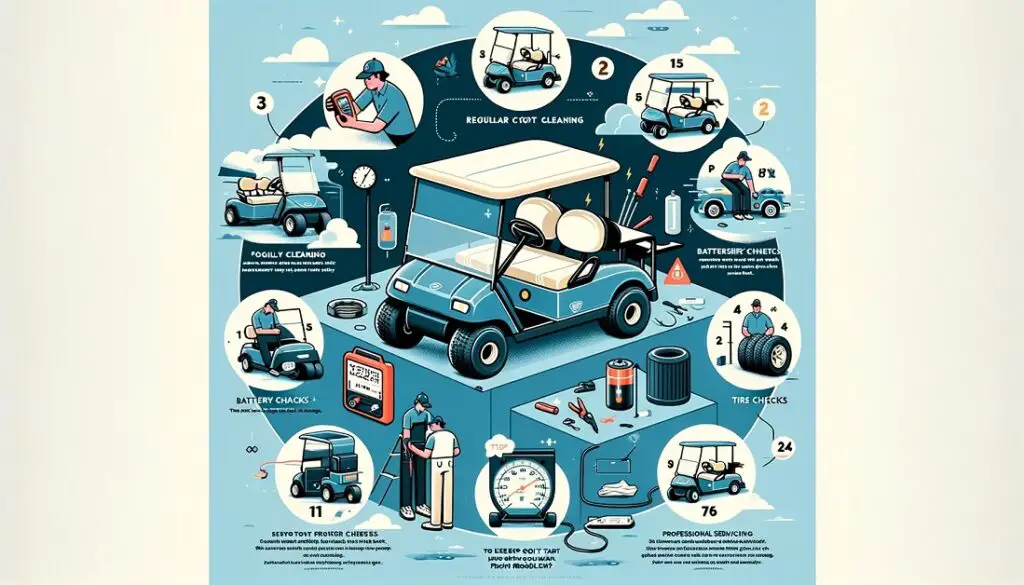
Some basic parameters you must know to keep golf carts safe from problems you need to do regular checkups, proper maintenance, and some preventive care frequently golf cart maintenance can reduce the risk of unseen faults and increase the life of your cart. Here’s a detailed guide to keeping your golf cart in good condition:
Regular Maintenance Schedule
Maintaining a regular maintenance schedule is critical but it creates a big impact on your cart performance regular inspections include some important things which you should inspect regularly your tire condition, tire pressure, battery charge, and filled water level (for electric carts) changing the oil (for gas carts) and also inspect brakes of golf cart. These are some important inspections that you add to your daily life routine so that not only does your cart work smoothly but also allows you to identify possible problems before they become major concerns. they also save your money or time as well
Battery Care
The battery is the power source for electric golf carts. To ensure that it runs efficiently:
Clean Battery Terminals: Keep the battery terminals clean and corrosion-free. To clean the terminals, mix baking soda and water, then rinse and dry well.
Check Water Levels: Ensure that the water levels in each battery cell are adequate, topping up with distilled water as needed. Avoid overfilling, as this can result in acid spillage.
Regular Charging: Establish a charging practice that ensures the batteries are charged after each use. Allowing the batteries to go completely down can limit their life.
Tire Maintenance
The most important part of any vehicle is the tire regular tire inspection is most important not only for your cart safe from problems and faults but it is also very crucial for your safety. That is why check your tire pressure almost daily base and check your tires any signs of damage so as soon as possible replace it and safe yourself to major accident and also safe your money if you inspect your tire daily and change with in time.
Cleanliness And Inspection
Keeping your golf cart clean is beneficial not only for cosmetic reasons but also to avoid operational issues. Mud and debris can obscure problems or cause corrosion and damage over time. A frequent wash can help to avoid these problems, and washing is a great time to inspect the cart for signs of wear, corrosion, or loose pieces.
Electrical System Checks
You must regularly inspect your golf cart’s electric system now the question is what thing to inspect in the electrical system. So the answer is to inspect all wirinTheyey are tightly connected with terminals and connections and for a gas golf cart you should inspect the starter generator, ignition system, or any other important component you think is also important so you can check it also
Lubrication
Lubrication of moving parts is crucial for preventing friction and wear. This includes wheel bearings, steering systems, and suspension parts. Refer to your golf cart’s owner’s manual for particular lubrication spots and recommended lubricants.
Professional Inspections
Even with regular care and maintenance, getting your golf cart inspected by a professional at least once a year is a smart idea. They can do a thorough examination, including areas that you may find difficult to inspect on your own. They can also detect and resolve growing concerns before they become serious problems.
To fix common golf cart problems, you may need to replace the solenoid, which can help prevent the cart from malfunctioning during use
Summary
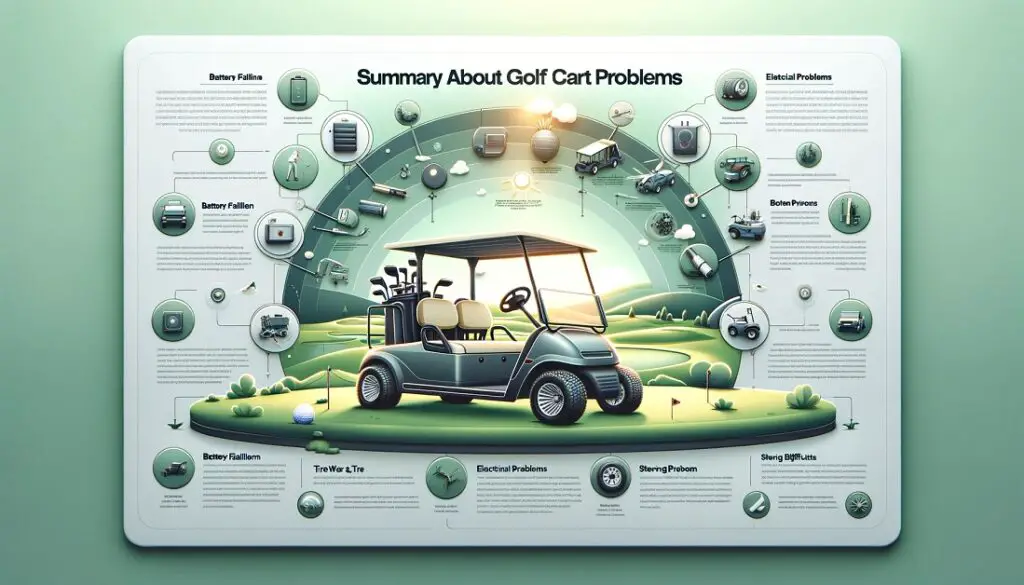
Finally, keeping your golf cart out of trouble requires some simple behaviors. Consider your golf cart to be a friend who is always there for you on the course. Just like any good friendship, it requires some care and attention to remain strong.
Remember to follow a regular check-in process, similar to how you would with a friend. Keep those batteries happy by cleaning and charging them regularly, ensuring that the tires are constantly ready to go, and avoiding dirt and grime buildup. Electrical components require periodic inspection to avoid unexpected problems. And, like any friend, your golf cart does not want to be pushed too hard—so keep it lubricated, avoid overloading it, and drive carefully.

